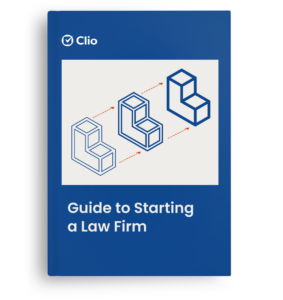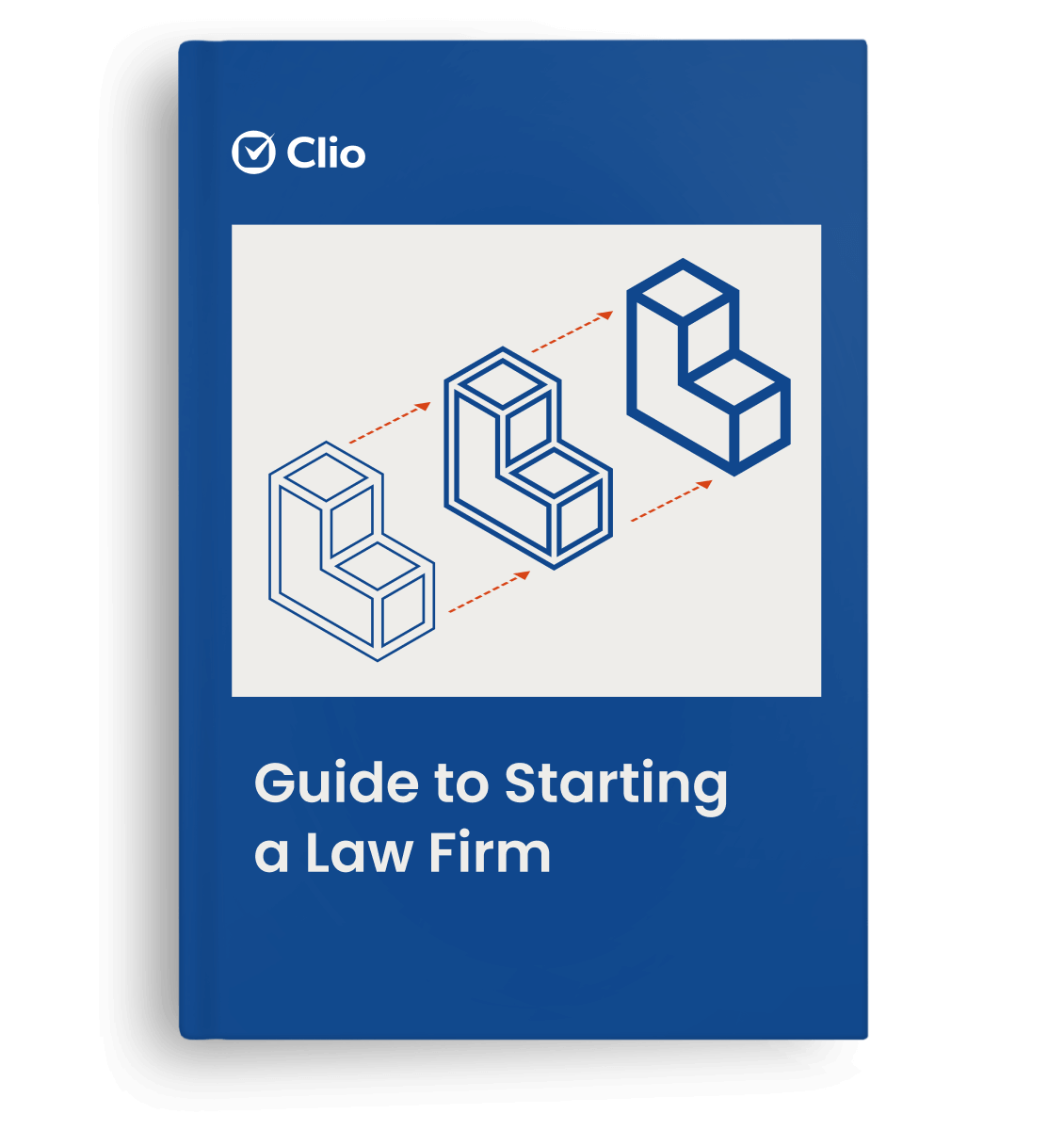Creating high-quality law firm website content is a great way to ensure your firm can be found in search engines. That same content will also help you engage your audience, build trust in your firm, and convert website visitors into clients.
The task of creating content can seem overwhelming. Even for lawyers and legal practitioners who are comfortable with writing, creating law firm website content requires flexing new and different writing muscles. And planning, researching, and writing effective content requires a significant investment of time and resources.
Therefore, to get a good return on that investment, you need to do it right.
Create a website in minutes with our simple legal website builder
Easy-to-edit attorney website templates, no coding required—get your law firm website up and running in the time it takes to make a cup of coffee.
Create your legal website now.
To create effective law firm web content, you need an optimized website, a deep understanding of your audience and the challenges they face, a good list of target keywords, and a proper content plan. In this guide, we’ll discuss law firm website content basics and best practices and offer some how-to tips on how to get started. We’ll also discuss the best ways to take your content from idea to execution to publication.
Best practices for creating law firm website content
Before you start creating content for your law practice’s prospects and clients, it’s best to take a step back and reset your overall view of your website and audience. That way, you can make sure your law firm website content is meeting their needs—and yours.
Here are four things to consider before you begin planning your law firm website content:
1. Keep your law firm website goals in mind

What do you want your website to do for you? At the very least, you want your legal website to increase brand awareness of your firm and practice areas. To do so, you’ll want to create search engine optimized (SEO) content that helps you rank high on search engine results pages (SERPs). By ranking as high as possible on SERPs, you can drive more visitors to your law firm’s website.
If you want to use your site as a demand generation and lead capture tool for your legal practice, you’ll need valuable content that prospects will be willing to trade their contact information for. You’ll also need follow-up content (like nurture email campaigns) to continue marketing to your prospective clients.
In short: You need to determine what your website goals are and prioritize them before you begin creating content.
2. Put your audience first
You can’t create effective law firm website content without knowing who your target audience is. By understanding who you’re creating content for, you’ll know what type of content to create, and how to create it.
For example, if you focus on corporate law, you’ll want your content to have a slightly more formal business tone. You want to convey that you understand your clients’ business requirements. Longer-form content (like articles with more than 1200 words) may be more appropriate to showcase your expertise in their specific area.
As a family lawyer, on the other hand, you understand that clients will generally be looking for you during stressful and emotional times. You’ll want to communicate in a softer, more human tone. Knowing that in many cases clients want to quickly move through this difficult time in their lives, you’ll want to keep your content concise as well.
Putting your audience first means stepping into your audience’s shoes and creating content that appeals to them.
3. Deliver a memorable website experience
The user experience on your firm’s website is critical to ensuring that visitors stay on your site and engage with your content. “User experience” refers to the perceptions and responses that people have from using your law firm’s website and content. Imagine if your law firm website content is difficult to read and your site is a challenge to navigate. Visitors will likely leave (bounce) before visiting that valuable “contact us” page.
When creating content, keep the following in mind:
- Keep content short and scannable: Sentences should be 20-25 words, paragraphs 4-5 sentences.
- Use subheadings to break up longer pieces: Sections should be no longer than 300-350 words.
- Use images and media to convey information: Present data as charts and graphics where possible, and choose photographs that your prospective legal clients can relate to.
Before investing in creating law firm website content, make sure you’re following website design best practices. You should also get a good idea of what makes a good law firm website.
4. Don’t stretch yourself thin
Be realistic about the time, effort, and budget you have to spend on content marketing for your law firm. As an attorney, your time is valuable. However, content creation can be time-consuming and expensive to outsource. How much law firm website content you choose to create and how often you choose to publish it will depend on the time and resources you have available.
Also, keep in mind that the quality of your website’s content determines its usefulness—content that is created as an afterthought will not produce the desired results.
Create a website in minutes with our simple legal website builder
Easy-to-edit templates, no coding required—get your website up and running in the time it takes to make a cup of coffee.
How to create high-quality law firm website content
Successfully creating great content that is relevant and engaging to your audience, and helps you meet your business objectives, requires preparation and planning.
The following steps will ensure your content writing is thoroughly thought-out and set up for success.
Optimize your website

Before you publish content on your website, make sure it’s ready to present the content most effectively. That means making sure your website and every piece of content you publish adheres to standard search engine optimization (SEO) best practices. Your website should also follow on-site and technical SEO best practices as outlined in Moz’s Beginner’s Guide to SEO. Some basic SEO best practices to follow include making sure your law firm’s website has:
- No broken or outdated links
- No duplicate title tags or meta descriptions
- Been optimized for mobile and speed
For more on website development and optimization, check out Moz’s Beginner’s Guide to SEO and our How-to Guide to Website Design for Law Firms.
Do your keyword research
To ensure your law firm website content is showing up in search engine results pages, it must include the keywords people are searching for and are interested in. How do you know what keywords to use? By conducting keyword research.
You already have a good understanding of who your clients are and what matters to them. By combining that knowledge with good keyword research, your content becomes more relevant and search engine optimized. Here’s a quick three-step process to get you started:
- Think about common conversations you have with clients and prospects. What are the types of questions they ask you? Make a list of common themes based on those discussions. Ideally, you’ll have 4-6 themes, which will become your content categories.
- Brainstorm some specific Google search queries you imagine your clients and prospects might search for, for each theme or category. Aim for five or so keywords for each theme.
- Put these keywords into Google and make note of the results. Pay particular attention to the “additional searches related to” list on the bottom of the page to build out your keyword lists even further.
Now you can use those keyword lists, alongside your understanding of your audience, to generate specific content ideas.
If you want to take things a step further, you can use a search engine optimization (SEO) tool for additional keyword research. These tools will give you more comprehensive lists of keywords and phrases. Advanced SEO tools like Moz can help you understand how often people are searching for them, where they’re searching for them, and more. We’ll talk more about SEO tools below.
Learn more about how to do keyword research in Moz’s Beginner’s Guide to Keyword Research.
Analyze your competition
Alongside your keyword research, it’s a good idea to analyze what content other law firms in your location and practice area are creating and how they’re performing. Follow these steps for a basic competitive analysis:
- When entering your keywords into Google Search, scan the results and make note of any competing firms that appear on page 1.
- Click through any relevant results, and make note of the following:
- How long the content is
- What headings are used
- Any media (images, graphics, video) used
You can use this information as a baseline when creating your content. For example, if the competition is achieving a top rank for a desired keyword with a 500-word blog post with one subheading and no images, you should be able to do better than them with an 800-word article with two subheadings and a graphic.
Conduct a content audit

If you’re just starting to build your firm’s website, you may not have much content to review. But if you’ve built content previously, now is the time to review it.
The purpose of a content audit is to help you determine if your existing content is meeting your needs and those of your audience. If it is, great. If it isn’t, you’ll need to decide whether you should update that content or delete it.
You can manually scan all the pages on your website or use an SEO Crawler to help you streamline the process. But the outcome of your audit should be a list of all pages and content. How much detail you put into your audit is up to you, but it should be enough to help you decide whether to keep or delete each page of your site. At the very least, include the following:
- Content type (usually page or post)
- URL
- Page title
You might want to go into further detail and list the keywords each piece of content is targeting, what headings are used, the meta description, when it was published, etc. Ultimately you want enough information to help you make the following decisions:
- Is the content relevant to your audience, current, and search-optimized? Keep it.
- Is it relevant, but outdated and/or not optimized? Update it.
- Is it not relevant? Delete it.
Finally, compare your content audit to the keyword research you’ve already done and identify any gaps. If there are high-priority topics and keywords that you don’t have content for, prioritize creating that content next.
Develop a formal content strategy
Creating your law firm’s content strategy might seem like the most daunting task on this list. There’s a lot that goes into it, from the key performance indicators you want to track to the specific topics you’ll create content around. But it doesn’t need to be overwhelming. If you’ve already tackled the other steps on this list, you’re well on your way. Here are the six things that form the backbone of your content strategy:
1. Your goals
Your content goals should align with your website goals, as discussed earlier. You can have more than one content goal, but be sure to prioritize them. For example, your primary goal might be to drive more traffic to your law firm’s website, and your secondary goal might be to convert web traffic to leads.
2. Your KPIs
If you want to increase your firm’s website traffic, you’ll want to measure how many unique visitors come to your website. Also, you’ll want to measure how many leads you capture via the website.
3. Your audience
You should know the challenges your target audience is facing, and why they come to you for help. As part of your strategy, include demographic specifics (age, income, location) as well. You can build specific buyer personas if you like. But be sure to focus on who your legal clients are, the pain points they’re experiencing, and how you can help them.
4. Your preferred content types
With your audience in mind, think about what types of content they’ll most likely want to engage with. Do they like to read about other people who have experienced similar legal issues as them? How much patience do they have to read long-form content with more than 1200 words? Would they prefer video or visually-rich content?
5. Your publishing channels
We’re focusing on your website in this guide, but you can publish and promote your law firm website content on social media, YouTube, and other blogs. Consider which channels your audience uses most and publish your content accordingly.
6. Your reporting framework
You’ve chosen what KPIs to measure, but you also need to report on them. Determine the tools you need (such as Google Analytics) to capture that data. Then, determine how often you want to report, and leave room in your publishing schedule to revise and update content that is not performing.
Develop a content plan

With your overall strategy in place, you need a plan to carry it out.
- Know who’s doing what: Depending on your firm size, you might be planning and executing your content plan yourself. Or you may be able to assign tasks, such as content creation or reporting, to different team members. You can also identify any tools and external resources (more on those shortly) you need. Either way, be clear on what each contributor is responsible for.
- A content framework: Take your keyword research and start planning specific content ideas under each category. You might have three or four general topic categories. Under each content category, you should have several specific content ideas. You can further organize these by their stage in the buying journey.
- A publishing schedule: Also called a content calendar or editorial calendar, your schedule tells you what content to publish and when. Understanding your audience also helps inform how much content they’ll be willing to consume. This will help inform you on how much content you should create. Also, consider specific dates or times of the year for which you should publish specific content (tax time) or ramp content creation up (back to school) or down (Christmas holidays). And remember to prioritize filling any content gaps identified during your content audit.
Develop a content creation process or workflow
There’s one more thing to consider before you get into content creation: Creating a repeatable, sustainable process that you can use each time you create a new piece of content.
Your process should include the following:
- A clear content brief: Often a process in itself, the brief should include the keywords you’re targeting with this specific piece of content and what other content is competing for the same keywords. Perhaps most importantly, you should have an outline of the content. You can include additional detail, like a search engine optimized URL, page title, and meta description.
- Brief review and approval: Determine who needs to review the brief, including any subject matter experts who would know the topic best. Also, determine who will give the creator the final go-ahead.
- Content creation: Assign the work to a writer or content creator. Be sure to give a concrete deadline.
- Content editing: Assign an editor (or editors) who can review the work for technical accuracy as well as grammar, spelling, and SEO.
- Image/graphic sourcing: Determine who is going to find or create any images or media that accompanies your content.
- Content approval: Final sign-off of the content including images.
- Uploading and publishing: Add the content to your website content management system and schedule the go-live date.
- Promotion: Get the word out about your new content via email, social media, and other channels.
You can iterate and improve this process over time to continue making your content creation process as efficient as possible.
Use the right tools for legal content marketing

A Google search will reveal any number of software solutions and tools to help with your content marketing. Beyond your website, none are mandatory, but depending on your budget, there is a handful worth exploring and investing in:
- LawLytics: LawLytics is a website management and editing platform designed specifically for lawyers—it also integrates with Clio. It’s an easy way to publish and organize your content, including practice pages, blog posts, forms, contact info, and more.
- WordPress: WordPress is a website builder and content management system. It features a comprehensive library of themes and plug-ins that allow you to do just about anything with your site. Its back-end is easy to use and update. If you’re hiring a web designer to build your site, look for one who works with WordPress. Learn about additional options in The Best Do It Yourself Websites for Law Firms.
- Unbounce: Unbounce is a tool that lets you easily build dedicated landing pages with lead capture forms.
- SEO tools: Moz, Ahrefs, and SEMRush are three popular SEO tools. While each is slightly different, they can all help you conduct extensive keyword and competitive research, and run test and validation checks to help ensure your site is healthy and SEO-optimized.
- Google Analytics: Google Analytics is a free tool that helps you track your website performance. You’ll be able to see how many visitors are coming to your site, what pages they visit, what keywords they’re using to find you, and more.
Discover how much it costs to build a law firm website in our blog, How Much are Attorney Websites? A Guide to Budgeting and Value
You may like these posts
Outsourcing legal content writing
Once you’ve created a content plan, just one question remains: Who’s going to create this website content?
Many attorneys are confident and capable writers. But they may not be the right people to create website content. After all, lawyers should be focused on helping clients solve their legal problems (and on billable work).
There are multiple options available to help ensure your legal content gets written and published:
- Write it in-house: Depending on your firm size, you may have additional lawyers and legal practitioners who can write law firm web content. You can also hire an in-house marketing professional who can manage your website, create your content, and promote it on social media, etc.
- Hire a freelancer: There are freelance legal content writers who can take your content briefs and transform them into high-quality content for your law firm website. These writers may work on an hourly rate, on a per-article or per-project basis, or even a retainer. Whether you use websites such as ProBlogger, Upwork, or LinkedIn to help you find writers, be sure to vet their portfolio, and ensure they are a good fit for your legal content writing needs.
- Hire a content marketing agency: A marketing agency will likely cost more than a freelancer, but an agency can offer more. A content-focused agency can help you with your content strategy and framework. They can also quickly scale up and down depending on your needs.
You’re ready to create great web content for your law firm
Planning for and creating law firm website content might seem like a big lift. But when you do it right, it can have a transformative effect on your firm. You’ll communicate with your prospects and clients about the topics that matter to them, at the time that it matters most, in a language they can relate to. You’ll improve your ranking in search engine results pages and drive more traffic to your website. And you’ll convert more of that traffic into leads.
We published this blog post in April 2021. Last updated: .
Categorized in: Marketing








